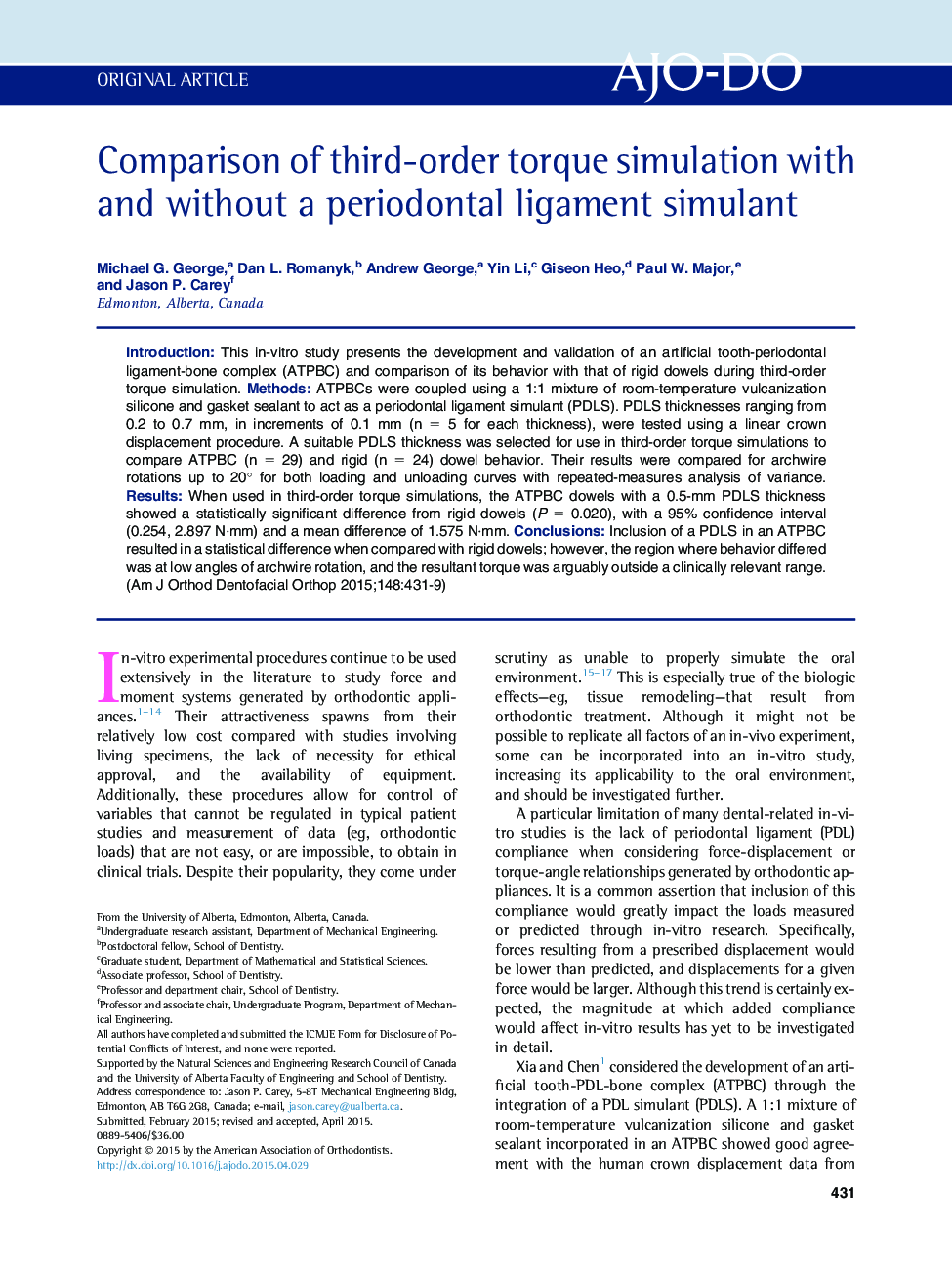| Article ID | Journal | Published Year | Pages | File Type |
|---|---|---|---|---|
| 3115451 | American Journal of Orthodontics and Dentofacial Orthopedics | 2015 | 9 Pages |
•An artificial tooth-periodontal ligament (PDL)-bone complex (ATPBC) was developed.•Crown displacement tests were used to evaluate ATPBC PDL simulant (PDLS) thicknesses.•An in-vitro orthodontic torque simulator (OTS) was used to simulate third-order torque.•ATPBC and rigid dowel responses when implemented in the OTS were compared.•Results indicate that inclusion of PDLS compliance in the OTS is unnecessary.
IntroductionThis in-vitro study presents the development and validation of an artificial tooth-periodontal ligament-bone complex (ATPBC) and comparison of its behavior with that of rigid dowels during third-order torque simulation.MethodsATPBCs were coupled using a 1:1 mixture of room-temperature vulcanization silicone and gasket sealant to act as a periodontal ligament simulant (PDLS). PDLS thicknesses ranging from 0.2 to 0.7 mm, in increments of 0.1 mm (n = 5 for each thickness), were tested using a linear crown displacement procedure. A suitable PDLS thickness was selected for use in third-order torque simulations to compare ATPBC (n = 29) and rigid (n = 24) dowel behavior. Their results were compared for archwire rotations up to 20° for both loading and unloading curves with repeated-measures analysis of variance.ResultsWhen used in third-order torque simulations, the ATPBC dowels with a 0.5-mm PDLS thickness showed a statistically significant difference from rigid dowels (P = 0.020), with a 95% confidence interval (0.254, 2.897 N·mm) and a mean difference of 1.575 N·mm.ConclusionsInclusion of a PDLS in an ATPBC resulted in a statistical difference when compared with rigid dowels; however, the region where behavior differed was at low angles of archwire rotation, and the resultant torque was arguably outside a clinically relevant range.
